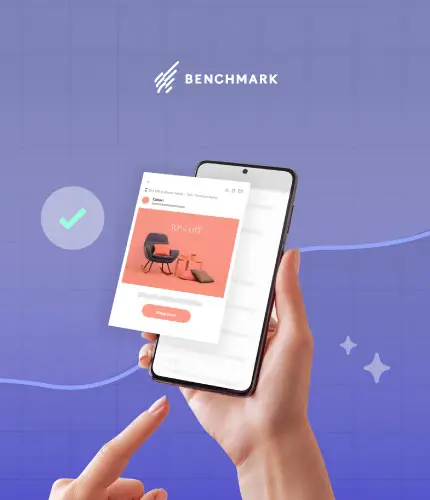
When it comes to email marketing, ensuring your campaigns reach customers’ inboxes and maintain optimal sender reputation is paramount. One essential tool for achieving this is an email subdomain. This guide will walk marketing managers through email subdomains, their importance, how to set them up, and best practices for naming them.
What Is an Email Subdomain?
An email subdomain is a secondary part of a website’s domain, which handles email-specific activities separately from the primary domain. It appears as a prefix to the main domain, such as “mail.yourcompany.com” or “newsletter.yourcompany.com.”
Email subdomains help organizations distinguish email marketing activities from other business emails, improve email deliverability, and protect the primary domain’s reputation.
Example of a Subdomain vs. Primary Domain:
- Primary domain: yourcompany.com
- Email subdomain: newsletter.yourcompany.com
When Should You Use an Email Subdomain?
Using an email subdomain is a strategic move, particularly for companies that send high volumes of emails. Below are specific cases when using an email subdomain makes sense:
- Email Marketing Campaigns: Segment marketing emails like newsletters, promotions, and drip campaigns.
- Transactional Emails: Set up a separate subdomain for transactional emails (e.g., “orders.yourcompany.com”) to ensure they bypass spam filters and maintain high deliverability.
- Multiple Email Campaigns or Departments: Large organizations running various campaigns or departments can create distinct subdomains for each. Example:
-
-
- events.yourcompany.com for event promotions
- promotions.yourcompany.com for discount offers
-
- Maintaining Sender Reputation: If marketing emails trigger spam complaints, the subdomain helps prevent damage to your primary domain’s reputation.

How Many Email Subdomains Do You Need?
The number of subdomains depends on your organization’s size and marketing needs. Here are some factors to consider:
- Type of Emails Sent:
-
-
- For small to medium-sized businesses, one marketing-focused subdomain may be enough.
- Larger organizations can use separate subdomains for various emails.
-
- Campaign Segmentation Needs: If you regularly send multiple types of content (e.g., events, discounts, or product launches), having a unique subdomain for each campaign type can keep operations organized.
- Volume of Emails: If you send large emails across different regions or audiences, creating multiple subdomains helps protect your sender reputation and ensures better deliverability.
Subdomain Name Ideas for Email Campaigns
Choosing relevant, clear, and professional names is important when naming subdomains. Below are some ideas:
- General marketing emails:
-
-
- mail.yourcompany.com
- newsletter.yourcompany.com
- campaigns.yourcompany.com
-
- Transactional emails:
-
-
- orders.yourcompany.com
- invoices.yourcompany.com
- receipts.yourcompany.com
-
- Event-related campaigns:
-
-
- events.yourcompany.com
- webinars.yourcompany.com
-
- Support and customer service emails:
-
- support.yourcompany.com
- helpdesk.yourcompany.com
Ensure the subdomain aligns with the type of emails you send to avoid confusion among recipients.
How to Set Up an Email Subdomain
Creating an email subdomain involves a few technical steps, but your IT or web hosting team can assist you. Here’s a step-by-step process:
- Choose a Subdomain Name: Decide on a relevant subdomain name.
- Update DNS Records:
-
-
- Log into your domain provider’s control panel (like GoDaddy, Google Domains, or Cloudflare).
- Add a new CNAME or A Record for the subdomain pointing to your email service provider’s server.
- Add SPF, DKIM, and DMARC records to verify your domain and prevent spoofing or phishing.
-
- Authenticate Your Subdomain with Your Email Service Provider: Once the DNS records are set, authenticate your subdomain within your email platform to ensure ISPs trust it.
- Test Your Setup: Send test emails from your subdomain to ensure deliverability and confirm that no authentication errors occur.
- Monitor Performance: Use analytics tools to track open rates, bounce rates, and deliverability for emails sent from the subdomain.

Best Practices for Using Email Subdomains
- Monitor Subdomain Reputation: Use tools like Google Postmaster Tools to monitor sender reputation and identify issues.
- Use a Different Subdomain for High-Risk Campaigns: If running experimental campaigns with high engagement risk (like cold emails), consider using a unique subdomain to prevent your primary marketing subdomain from being flagged.
- Maintain Consistent Branding: Even though you use subdomains, ensure your emails maintain consistent branding elements (like logo and tone) to build trust.
- Monitor Bounce Rates and Complaints: High bounce rates or complaints can affect your sender reputation. Adjust your strategy if metrics indicate issues.
Email Subdomains and Deliverability: Why They Matter
Using an email subdomain improves your email deliverability, which refers to the ability of your emails to land in recipients’ inboxes instead of spam folders. Subdomains offer several advantages for improving deliverability:
- Isolate reputation risks: Problems with marketing emails won’t affect the primary domain or transactional emails.
- Improve tracking and analytics: Subdomains help monitor the performance of different campaigns more effectively.
- Protect the primary domain’s reputation: Even if a subdomain suffers from a drop in reputation, your primary domain remains intact for other business operations.
Final Thoughts: A Smart Move for Email Marketing Success
Email subdomains are powerful tools that marketing managers can leverage to improve email deliverability, maintain sender reputation, and organize campaigns. Whether running basic newsletters or managing multiple campaigns across various departments, setting up one or more subdomains can help streamline your operations and protect your brand’s online identity.
With careful planning, proper setup, and ongoing monitoring, email subdomains can unlock new opportunities for better campaign management and email performance. Start by setting up a subdomain today and take your email marketing strategy to the next level!







